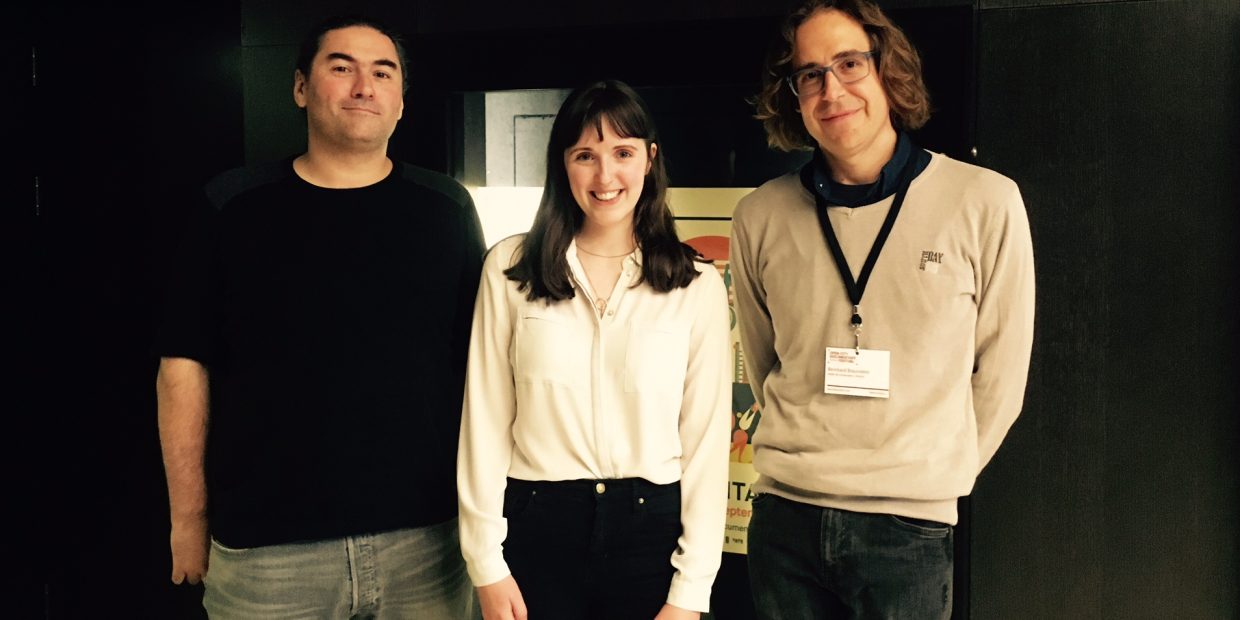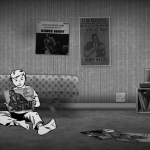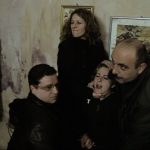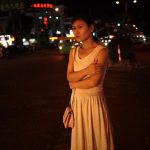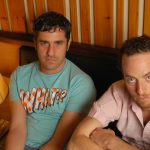Open City Documentary Festival interview
Atelier de Conversation documents a series of language workshops at the Pompidou Centre in Paris and captures the diverse range of people and topics that come together in the space. Through the discussions that take place the film explores cultural differences, stereotypes, and the trials and tribulations of being far away from home. Fundamentally, the message of the documentary is that we should remember never to overlook each other’s humanity.
FilmDoo talks to the film’s director, Bernhard Braunstein, and the host of the language workshops, Raphael Casadesus.
How did you two first meet and when did the idea for the film come about?
Bernhard: I was a participant of this atelier before I started shooting and that’s how we met. I’m from Austria and I was struggling a lot with the French language as I didn’t speak one word before I arrived in France. It’s very different from the German language, the pronunciation and everything was really very difficult. So I was desperately searching for a possibility to learn this language because I tried language courses but it didn’t really work. They would work on grammar but speaking wasn’t possible. Then by accident I found this atelier de conversation. I went there for almost one year and I was fascinated from the beginning but it was not in my mind to do a film, it was in my mind to learn the language. So it took time and after one year I realised that it was a beautiful subject for a film.
Raphael: When I did my first workshop Bernhard was actually there. I did it for five years then I changed to a new library. But, I did a lot of things in that library (The Pompidou Centre) and it was certainly what I liked to do the most. It’s beyond the work, it’s an experiment. There are a lot of emotions.
B: It’s a human experience.
There is so much that is discussed just in what we see in the film – how did you decide what conversations and topics to include in the film?
B: As I had already participated for one year, I knew a lot of the subjects that were discussed. I saw that some subjects were really very strong and that others were maybe not so strong. So, when we started shooting, I started proposing some subjects that I knew could be interesting for the film but in general we always met before and we’d talk about what we could do. Everyone made proposals and I made proposals of the subjects I knew, so it was an exchange.
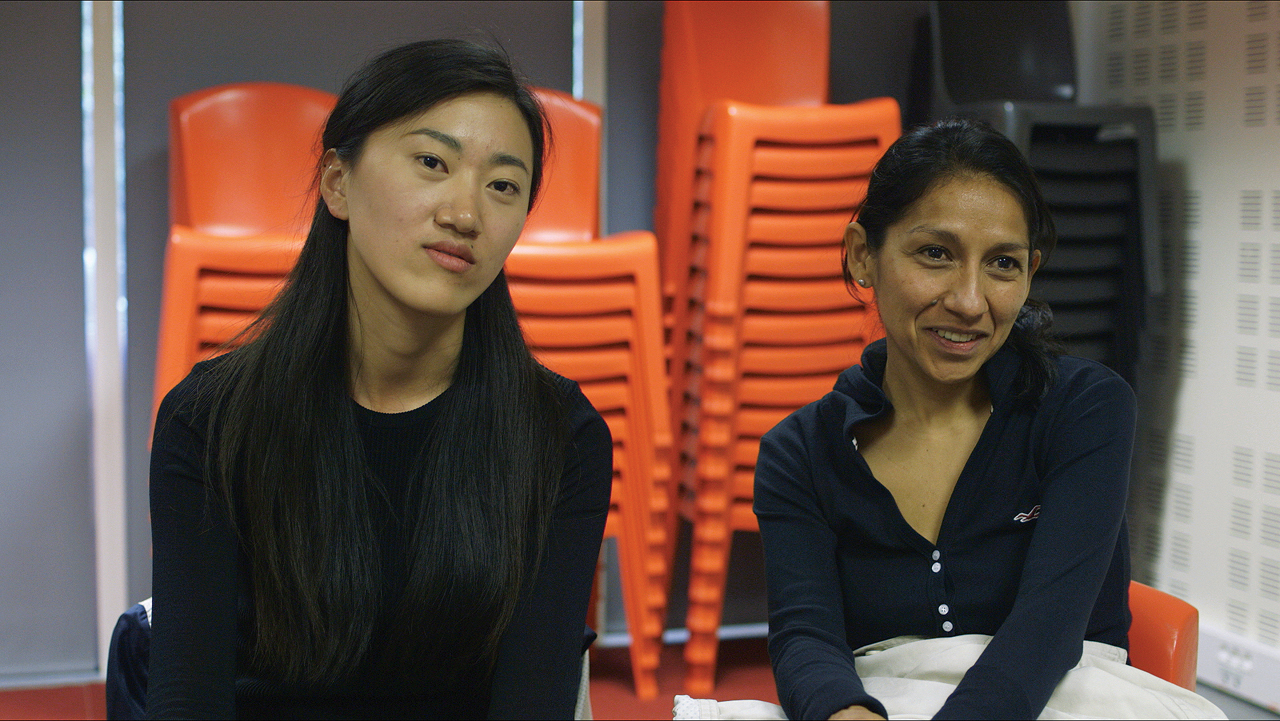
That kind of environment can be very scary and people can feel uncomfortable – how do you try and make people feel at ease?
R: What I’ve seen is that most people, even if they come from different backgrounds and countries and speak different languages, they feel almost ashamed of not speaking very good French. Most of them think that French people are going to judge them for not speaking good French. Honestly, French people do not care at all. Sometimes they want to speak because there’s a subject on which they have a lot to say, but they don’t have enough skills in French to express themselves. I tell them it’s okay and to use their words and, of course, I never correct them, because that’s not the point.
B: That’s very important. This is the main difference. When you’re corrected it’s like you’re in school. Not being corrected is very important.
If people were already slightly nervous and then you came in and filmed them, how did you make the people feel comfortable as a filmmaker?
B: I asked myself this question a lot: how can I film there without destroying this beautiful atmosphere? There wasn’t really a strategy. People would come in before the session and write their names on a list and that would be the moment that I’d say that we’d film. You’d have one minute to take away the fear somehow. This was important because even in one minute of meeting someone I think you can feel if you can trust this person or not. The people trusted me and also somehow it was a way for them to get a souvenir. It was an important moment in their lives and it got to be filmed. And, of course, there was the collaboration with Raphael who always made a very nice atmosphere. You see him and you feel comfortable. So, it was a mixture – some were confident, some wanted a souvenir and some liked the collectiveness.
R: I’d say most of the time they would quickly forget the camera. It seems astonishing because it was a really big camera with two people, but sometimes within five minutes the subject would become more important than the camera and they would just forget. They’d get lost in the moment.
You mentioned that it was a human experience. How much do you think of the experience in the atelier as French lessons or as a kind of therapy for people away from home?
B: The therapy aspect is very important, but there are a lot of other aspects. I think the language is important and there are really people who are struggling and want to learn something and they’re writing down vocabulary. But there are also a lot of people who are coming there to find friends. The people connect and become friends, some help each other to find a flat or even move in together. So, this social part is very important and, of course, they are all going through a difficult experience and they feel that they can talk about it together. This is the therapy part of it.
R: The ultimate experiment I’ve seen is in a group of people, maybe ten, who met each other at the classes. First, they used to have a drink after the classes, and then soon enough they started to meet and have a drink during the classes and they didn’t show up. So, somehow it’s not even shown how successful the classes can be. Now they don’t need us anymore.
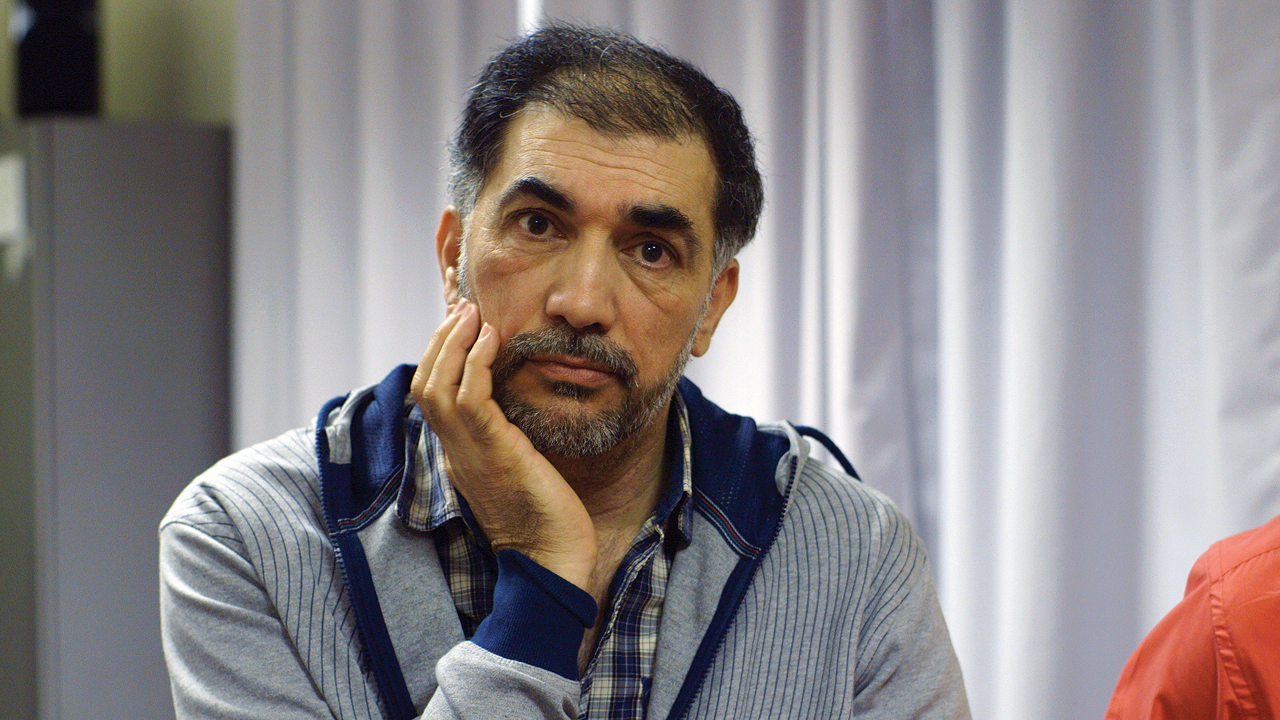
Some of the discussions in the film make it seem quite political – was this planned?
B: I think almost every subject is somehow political. As we’re living in a world where at the moment there a lot of crises everywhere, it’s somehow a little bit frightening, so it was important to me to talk about this, especially with people who can give very very different perspectives. This is the interesting part – there’s not only one opinion, there a lot of opinions and people can meet and listen to each other and try to understand each other rather than start immediately fighting for their own opinion. In this case, one of the positive aspects of not speaking a language very well is that you need to be careful with what you say and how you say it. So, yes, I think this meeting of opinions was very important.
There is one scene in the film when things get tense between two men. In these situations, how do you deal with cultural misunderstanding or even intolerance?
R: About that particular moment – in five years that was the first time it had happened and it was filmed. I had it in my mind that it was being filmed so I didn’t want to say that we had to stop. I wanted it to be on camera. We had two people: one was a man from Egypt who was a Coptic Christian in a Muslim country, and the other man came from Syria. The issue they were talking about – halal meat – it’s not something really odd in Paris. We all know where to find it and France was even the first Muslim country in Europe. We spoke a lot about where to find halal meat, that was part of our everyday discussions. So, at first when they were just talking about where to find it and asking if it was hard or easy, to me it was just a non-problematic subject. Then, it became a little more intense and to me what the Egyptian man was expressing was okay, it was the way he was talking that wasn’t. He was really aggressive but what he said was acceptable to me. I just wanted to tell him that he could say that, of course there’s no censorship here and everyone can express their opinion, but I can’t tolerate aggressive actions from one participant to another.
B: I think for the Christian guy it was very important that he expressed this. You could feel the anger he had. I don’t think the anger was against the other guy, it was against extremists. He had really bad experiences; his mother was killed. In fact, he’s a lawyer and defends women’s rights, but he’s had bad experiences and so he’s full of this anger, which I can understand. I think in this moment when he talks to the other man and says his name, that for me is a sign that it’s not hate against this person, it’s somehow hate against terrorists.
One topic that comes up quite often in the film is the economic crisis. Obviously, the so-called migrant crisis going on in Europe, which induces a lot of stereotypes and prejudice towards migrants. Was the aim of the film to help to eliminate this prejudice?
B: Yes, for sure, this is really one of the most important issues for me. That’s why I’m really happy that the film is shown and that it can travel and that people are writing about it and discussing it. We need to start to become human, rather than talking about the masses of immigrants that will destroy us, we should see the individuals. I think this is something you can see in my film. You see that these are people, these are humans with a story and not somehow a danger.
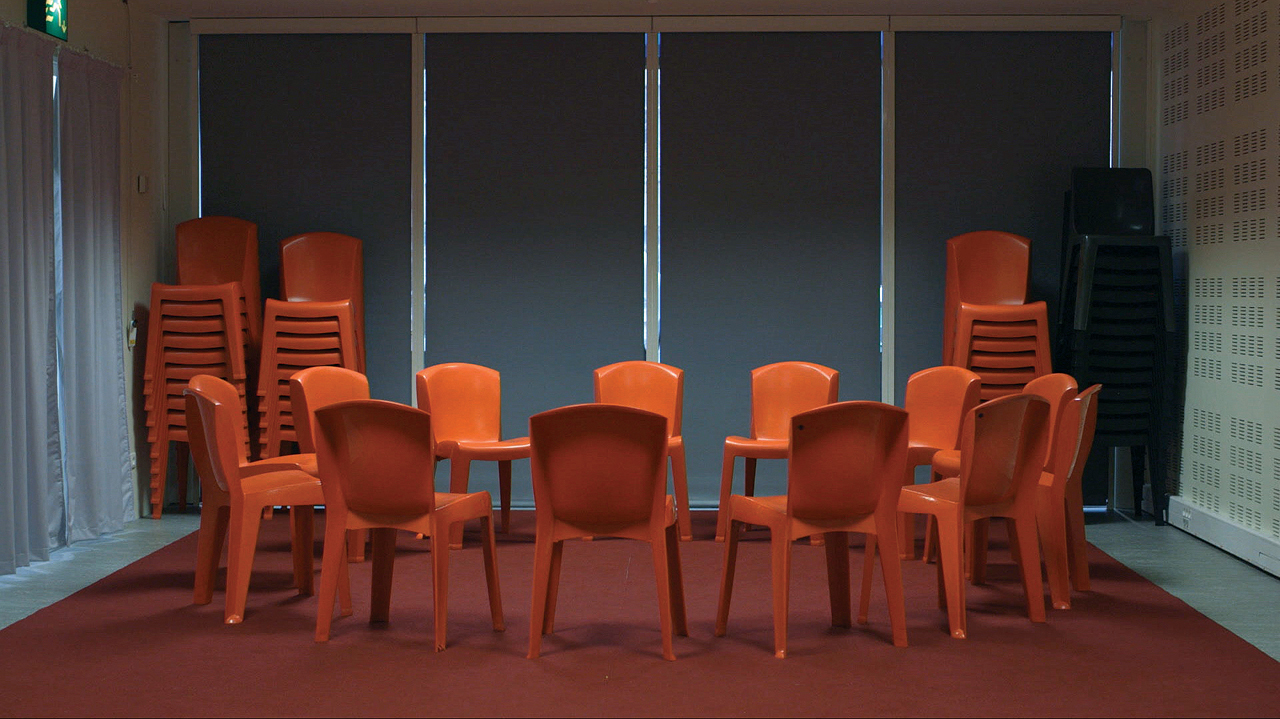
Outside of the atelier you filmed the rest of the library too – why did you decide to do this?
B: Well, for me it was important to show the connection to the outside world, so that we were not somehow in a utopia or a bubble. The construction of the film is like an onion, there are different layers. So, in the middle there is the heart, the circle of people, but then there is another layer which is the library. This is a very important place for a lot of people because there is knowledge and a lot of people learning languages; it’s a very open and tolerant place, even homeless people can go there to sleep. It’s in the Pompidou Centre, which is a place of art and culture. Also, what you can see when you see the library is a social aspect. For example, you can see that black people are cleaning and the white people are working with the books. These are little images that can make people think.
R: For some context, this library is really unique, there is no other one in France like it. It is 40 years old, it was built in the 70s, with a lot of ideas from the 70s that are still there. For example, there are no subscription cards, we don’t want to know who is coming. Everyone can go, it is a library for everyone. That is also why there are a lot of refugees there, because they know that we will never ask them for papers or identification. It’s quite a legendary place for librarians and if I tell other librarians elsewhere that I’ve worked there they react like I’ve been to space! They say that I must have so many stories. And I do!
B: Its dimensions are enormous. There are almost 4,000-5,000 people there every day in the library. It’s huge. It’s one of the biggest self-service libraries in the world.
Are you currently working on any new projects?
B: I’m developing a fiction film and I’m also doing experimental films sometimes. I’m working on something that I shot only with a very old telephone. There’s another subject that I’m very interested in which is pigs. I would like to do a film about pigs. Somehow I want to raise consciousness that pigs are very sensitive and social animals.
R: Last December I moved to another library and I’m doing something a little different. I’m in a smaller library but I’m working with refugees in a group of volunteers and I provide them with books to learn French and I help them to learn French. It’s really important to understand that libraries are a welcoming place.

